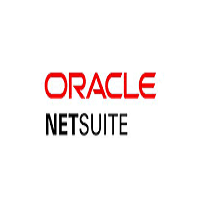GSI Technology Inc. ($GSIT) specializes in high-performance memory solutions and innovative hardware designed for artificial intelligence (AI) applications. Specifically, they have developed the Associative Processing Unit (APU), a processor tailored to accelerate complex search and compute tasks common in AI workloads.
Potential Contributions of GSI Technology to xAI, Grok, or Elon Musk's AI Endeavors
1. High-Speed Data Processing with Associative Processing Units
- Associative Processing Unit (APU): GSI Technology's APU combines memory and processing into a single unit, enabling parallel processing of large datasets at high speeds.
- Benefit to AI Models: For AI projects like xAI or Grok, which require processing vast amounts of data for training and inference, the APU could significantly reduce computation time and improve performance.
2. Enhanced AI Algorithm Performance
- Pattern Recognition and Search: The APU is adept at handling tasks involving pattern recognition, similarity search, and data retrieval, which are fundamental in machine learning and AI.
- Machine Learning Acceleration: By offloading specific tasks to the APU, AI algorithms can run more efficiently, allowing for faster iterations and development cycles.
3. Energy Efficiency and Cost Reduction
- Lower Power Consumption: The integrated design of the APU reduces the need for data transfer between separate memory and processing units, leading to lower energy usage.
- Cost Savings: Reduced power consumption can translate into lower operational costs for data centers running AI applications, which is beneficial for large-scale projects.
4. Scalability and Integration
- Modular Design: GSI Technology's solutions can be scaled to meet the demands of growing AI models, providing flexibility for projects that may expand over time.
- Ease of Integration: Their hardware is designed to be compatible with existing systems, potentially simplifying the integration process for new AI projects.
5. Specialized Hardware for Advanced AI Applications
- Real-Time Data Processing: For AI endeavors that require real-time analysis and decision-making, such as autonomous systems or complex simulations, the speed of the APU could be a significant advantage.
- Support for Advanced Algorithms: The hardware can support complex algorithms that may be computationally intensive on traditional architectures.
Alignment with Elon Musk's AI Objectives
- Ambitious AI Goals: Elon Musk's xAI aims to understand the true nature of the universe through advanced AI. This requires processing massive datasets and running sophisticated models.
- Need for Cutting-Edge Hardware: Achieving such objectives would benefit from hardware that can handle intensive computations efficiently, an area where GSI Technology excels.
- Innovation Synergy: Collaborating with a company like GSI Technology could align with Musk's history of pushing technological boundaries and adopting innovative solutions.
Considerations and Speculations
- No Official Collaboration Announced: As of October 2023, there are no public records of a partnership between GSI Technology Inc. and xAI, Grok, or Elon Musk.
- Potential Competitors: xAI may also consider other hardware solutions or develop proprietary technology tailored to their specific needs.
- Integration Challenges: Adopting new hardware architectures can require significant changes to software and systems, which may impact development timelines.
Founders of GSI Technology Inc.
Lee-Lean Shu
- Position: Co-founder, Chairman, President, and Chief Executive Officer (CEO)
- Role: Lee-Lean Shu has been instrumental in guiding GSI Technology's strategic vision and growth since its inception. With a strong background in engineering and management, he oversees the company's overall operations and long-term objectives.
Robert Yau
- Position: Co-founder, Vice President of Engineering, and Director
- Role: Robert Yau plays a key role in the technological development of GSI Technology's products. His expertise in engineering has been crucial in advancing the company's memory solutions and innovative hardware offerings.
GSI Technology Inc. was founded in March 1995 in Sunnyvale, California, United States, located in the heart of Silicon Valley.
GSI Technology specializes in high-performance memory products and advanced computing solutions, including their flagship Associative Processing Unit (APU) designed for artificial intelligence and high-speed search applications.
Since its founding, the company has focused on delivering innovative hardware solutions to meet the demanding needs of various technology sectors, including telecommunications, networking, and data center operations.
- GSI Technology is publicly traded on the NASDAQ stock exchange under the ticker symbol GSIT.
- Mission: The company aims to provide cutting-edge memory and processing technologies that enable faster, more efficient data processing for complex computational tasks.
- Headquarters:
- Address: 1213 Elko Drive, Sunnyvale, CA 94089, USA
- Phone: +1 (408) 331-8800
- Website: www.gsitechnology.com
GSI Technology Inc. could potentially assist xAI, Grok, or Elon Musk by providing advanced hardware solutions that enhance the performance and efficiency of AI computations.
Their Associative Processing Unit (APU) offers unique capabilities that align with the computational demands of ambitious AI projects aiming to process large datasets and execute complex algorithms quickly.
Recommendations
- Stay Updated: For the most recent developments, check official announcements from xAI, GSI Technology Inc., and Elon Musk.
- Evaluate Technical Compatibility: Assess the technical requirements of xAI or Grok and compare them with the capabilities of GSI Technology's hardware.
- Explore Collaborative Opportunities: If feasible, initiating discussions between the technical teams could uncover mutual benefits.
Editor Note:
(added shares Oct 2nd)
Disclaimer
- Speculative Assessment: This analysis is speculative and based on the technological capabilities of GSI Technology and the known objectives of xAI and related projects as of October 2023.
- Verify Current Information: For the latest information, please refer to recent publications, official statements, and reputable news sources.




